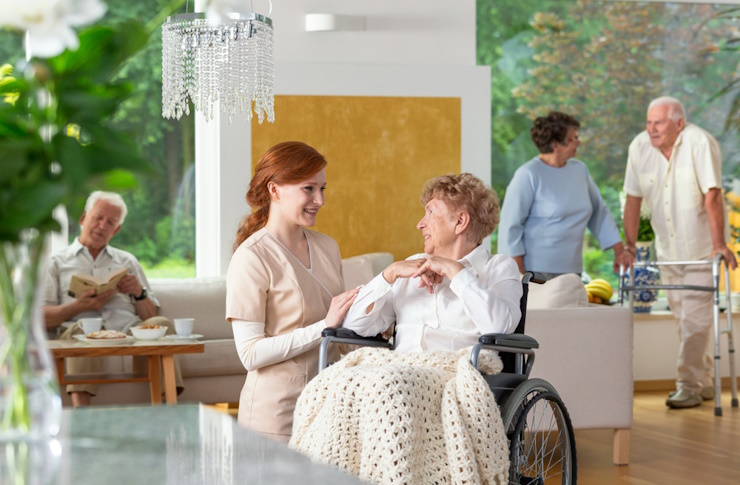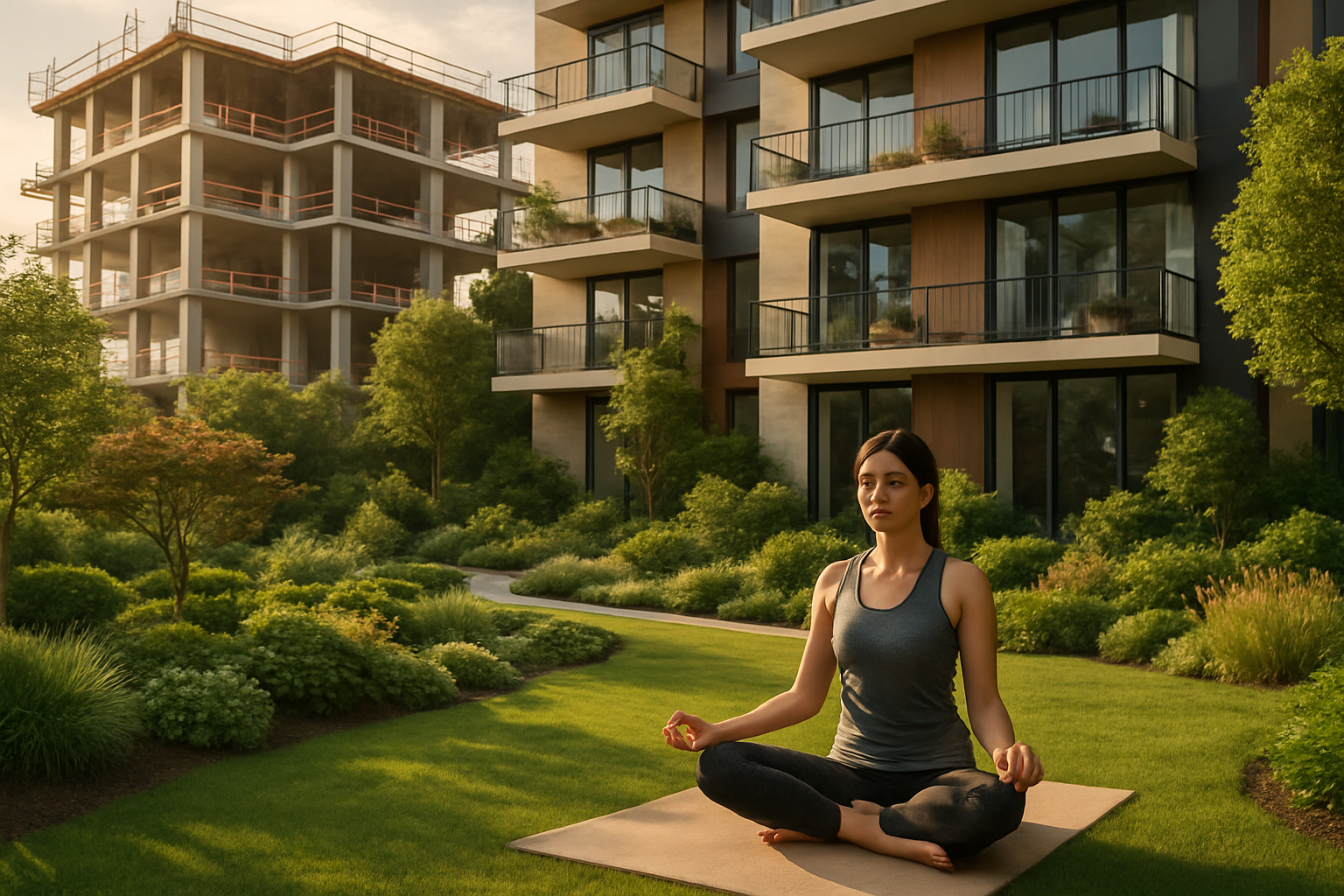Find Your Perfect Senior Home: Supportive, Safe, and Tailored to You
Finding the ideal senior home is about more than comfort—it’s about safety, support, and a lifestyle tailored to your needs. In 2025, modern senior living offers thoughtfully designed spaces, compassionate care, and personalized services that empower residents to enjoy every day with dignity and peace of mind. Discover how the right home can transform the golden years.

What Are the Supportive Senior Living Options Available?
Senior living encompasses a spectrum of residential options designed to meet varying care needs. Independent living communities cater to active seniors who require minimal assistance but desire convenience and community. These facilities typically offer maintenance-free living, social activities, and amenities like dining services and transportation.
Assisted living facilities provide a middle ground, offering help with daily activities such as medication management, bathing, and dressing, while still promoting independence. Staff is available 24/7, but residents typically have private apartments and maintain significant autonomy.
Memory care units specialize in supporting those with Alzheimer’s disease or other forms of dementia, featuring enhanced security measures, specialized programming, and staff trained in dementia care techniques. For seniors needing more intensive medical supervision, nursing homes (skilled nursing facilities) provide round-the-clock care from licensed nursing professionals.
Continuing Care Retirement Communities (CCRCs) offer a comprehensive approach, allowing residents to transition between independent living, assisted living, and skilled nursing care as their needs change, all within the same community campus.
How Can You Ensure a Safe and Comfortable Senior Care Environment?
Safety features should be a top priority when evaluating senior living facilities. Look for comprehensive security systems including emergency call buttons in residences, 24-hour staffing, and secured entrances. Physical safety measures such as grab bars in bathrooms, non-slip flooring, good lighting, wheelchair accessibility, and hallway handrails are essential structural elements.
A comfortable environment extends beyond physical safety to include proper maintenance of facilities, cleanliness, comfortable temperature control, and pleasant common areas. The staff-to-resident ratio is a critical indicator of care quality—sufficient staffing ensures timely assistance and personalized attention.
Background checks and training requirements for staff members should be rigorous and transparent. Quality facilities conduct regular emergency preparedness drills and have clear protocols for medical emergencies. When visiting potential homes, observe staff interactions with residents—respectful, patient, and warm communication indicates a positive culture of care.
What Personalized Services Are Available for Seniors in Modern Care Facilities?
Today’s senior care facilities have evolved far beyond the institutional settings of the past. Personalized care plans have become standard, with assessments that evaluate each resident’s unique needs, preferences, and goals. These plans cover medical requirements, dietary preferences, activity interests, and social needs.
Dining options have expanded dramatically, with many communities offering restaurant-style experiences, specialized menus for different dietary needs, and accommodations for cultural preferences. Fitness and wellness programs are increasingly tailored to individual abilities, with options ranging from chair yoga to swimming and strength training designed specifically for seniors.
Activity calendars now reflect diverse interests—from book clubs and gardening to technology classes and art workshops. Some facilities even offer personalized transportation services for shopping, medical appointments, and recreational outings. Memory care programs have become particularly sophisticated, with personalized approaches that incorporate residents’ life histories and preferences into daily activities and interactions.
What Are the Modern Senior Living Trends for 2025?
Technology integration is transforming senior living with smart home features that enhance safety and independence. Voice-activated devices control lighting and temperature, wearable health monitors track vital signs, and telehealth services provide convenient medical consultations. Some communities now implement artificial intelligence systems that learn resident patterns and can detect potential health issues early.
Intergenerational living models are gaining popularity, with some communities intentionally creating opportunities for seniors to interact with younger generations through shared spaces, volunteer programs, and collaborative activities. These connections benefit both age groups and help combat isolation.
Wellness-focused design is another significant trend, with communities incorporating biophilic elements that bring nature indoors, enhanced lighting systems that support circadian rhythms, and spaces specifically designed for mindfulness practices and stress reduction. Sustainability has also become a priority, with many new facilities featuring energy-efficient systems, waste reduction programs, and even community gardens.
Person-centered memory care represents a major advancement, moving away from one-size-fits-all approaches to dementia support. These specialized programs focus on preserving dignity, maintaining connections, and creating meaningful experiences based on each resident’s unique life story and preferences.
How Do You Evaluate and Compare Senior Living Facilities?
Creating a comprehensive evaluation checklist is essential when comparing senior living options. Begin with accreditation and licensing—reputable facilities maintain proper credentials and regularly undergo external quality reviews. Request transparency regarding staff qualifications, training requirements, and turnover rates, as staff stability often correlates with care quality.
Financial considerations should be thoroughly examined, including initial costs, monthly fees, what services are included in base pricing, and what triggers additional charges. Ask about fee increase histories and policies to avoid unexpected financial surprises.
Location factors matter significantly—proximity to family members, medical facilities, and familiar neighborhoods can impact adjustment and quality of life. Conduct multiple visits at different times of day to observe daily operations, meal quality, cleanliness, and resident engagement levels.
Speak with current residents and their families about their experiences, paying attention to both positive feedback and concerns. Review the community’s activity calendar to ensure it aligns with your or your loved one’s interests and abilities. Finally, carefully review the contract terms, including move-in and move-out policies, and consider having an elder law attorney review documents before signing.
Senior Living Facility Comparison
| Facility Type | Level of Care | Key Features | Estimated Monthly Cost Range |
|---|---|---|---|
| Independent Living | Minimal assistance | Private apartments/cottages, social activities, dining services, transportation | $1,500-$6,000 |
| Assisted Living | Moderate assistance | Help with daily activities, medication management, 24/7 staff, meals, housekeeping | $3,500-$7,000 |
| Memory Care | Specialized dementia care | Secured environment, specialized programming, higher staff ratio | $5,000-$10,000 |
| Skilled Nursing | Intensive medical care | 24/7 nursing care, rehabilitation services, medical treatment | $7,000-$12,000+ |
| CCRC | Multiple levels available | Lifetime care contract, transition between care levels | $3,000-$10,000+ monthly plus entrance fee ($100,000-$1,000,000) |
Prices, rates, or cost estimates mentioned in this article are based on the latest available information but may change over time. Independent research is advised before making financial decisions.
Finding the right senior living situation is ultimately about matching personal needs, preferences, and financial resources with the appropriate level of support. By understanding the range of options available and thoroughly researching potential communities, older adults and their families can make informed choices that promote safety, dignity, and quality of life. The ideal senior home isn’t just about physical accommodations—it’s about creating an environment where individuals can continue to grow, connect, and thrive throughout their later years.
This article is for informational purposes only and should not be considered medical advice. Please consult a qualified healthcare professional for personalized guidance and treatment.




